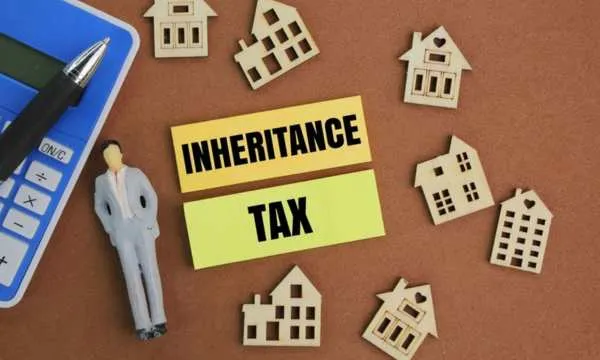Embrace the thrill of being your own boss! Navigate the complexities of tax for self employed today!
ad
This practical guide to tax for self employed professionals clarifies the essentials so you can plan with confidence, from understanding roles to preparing for audits.
Along the way, you will learn how to map deadlines, use gross revenue to estimate taxes, and identify benefits that may lower your tax bill.
ad
We will also highlight simple technology tools and recent trends that influence how self‑employed people manage compliance.
With small, steady habits and clear structure, your tax for self employed routine can become far more predictable and stress free.

What are the Differences Between Freelancers and Independent Contractors?
Freelancers and independent contractors both operate as self‑employed, but there are practical distinctions that affect how you manage tax for self employed obligations and contracts.
A freelancer typically serves multiple clients on short projects, often juggling variable workloads and timelines.
An independent contractor may work under a longer agreement with one or a few clients, with defined deliverables and schedules. In both cases, you manage your own invoicing, expense tracking, and estimated taxes.
For tax purposes, most freelancers and independent contractors report business income and expenses on a Schedule C in the United States, or the equivalent form in other jurisdictions.
You are generally responsible for self‑employment taxes and income taxes, which means planning for quarterly estimated payments.
While job titles vary, what matters most is the substance of the working relationship, including control over how work is performed and who provides tools or equipment, all of which affects tax for self employed reporting.
Because classifications are fact specific, keep documentation such as contracts, scopes of work, and proof of independent control. This safeguards your status during any compliance review and supports accurate tax for self employed filings.
If you collaborate with clients internationally, confirm local definitions and rules, as terminology may differ across countries while the core principles of independence and control remain similar.
How to Create a Tax Schedule: Organize Your Deadlines!
A reliable calendar reduces stress and late payment penalties for tax for self employed professionals. First, identify your key dates for estimated quarterly payments and annual filings.
Mark each due date and set two reminders one two weeks before and one two days before. Be sure to account for weekends and official holidays that may shift deadlines.
-
Set calendar alerts for quarterly estimates
-
Add reminders for annual filings and state or local deadlines
-
Schedule a monthly 30‑minute check‑in to reconcile income and expenses
-
Automate transfers into a separate tax savings account each pay cycle
If you operate in multiple states or countries, map each jurisdiction’s filing dates in a central tracker. Many accounting platforms can generate estimated tax reports and email reminders.
Keeping your calendar synchronized across devices ensures you always see the next step.
Finally, keep a brief checklist for the week before each payment and reconcile books, export a profit and loss report, verify cash on hand, and authorize the payment as part of your tax for self employed routine.
Create a dedicated “tax ops” block every first Friday reconcile transactions, tag expenses, and snapshot your cash flow for reliable tax for self employed planning.
How to Use Gross Revenue to Calculate Taxes
Gross revenue is your total income before expenses. To estimate tax for self employed obligations, start with gross revenue, subtract ordinary and necessary business expenses to arrive at net profit, and then apply applicable rates for income tax and self‑employment tax in your jurisdiction.
Because rates and deductions vary by country and state, use current official guidance or trusted software. Avoid relying on last year’s percentages if your income, location, or rules have changed.
A simple forecasting habit helps project revenue for the next quarter, model a conservative expense rate, and reserve a percentage of each payment in a separate account.
Mileage, home office, professional fees, software subscriptions, and allowable equipment may reduce taxable income when properly documented.
For vehicle use, standard mileage rates change periodically consult the latest official rate rather than assuming a prior year’s figure, especially when preparing tax for self employed estimates.
What Tax Benefits Can the Self-Employed Take Advantage of?
Common benefits include:
-
Deductions for a qualifying home office
-
Business mileage or actual vehicle expenses
-
Health insurance premiums you pay for yourself
-
Retirement contributions to plans designed for self‑employed individuals
-
Qualifying education
-
Certain equipment under local rules
Keep receipts, bank statements, and usage logs to substantiate each deduction. Well organized records turn potential savings into compliant, defensible tax for self employed positions.
Recent discussions and reports have noted potential changes affecting self‑employed taxpayers, such as enhanced technology use by tax authorities and proposals related to deductions.
Because the status of such items can change during the legislative process, verify what is enacted and effective for the current year using official resources or a licensed professional before claiming any new tax for self employed benefit.
Technology can also boost your benefit capture. Modern accounting platforms categorize expenses in real time and flag items that may be deductible, from internet and phone allocations for a qualifying home office to professional development.
Additionally, some payment platforms and invoicing tools provide year end summaries that make it easier to reconcile income and prepare forms for filing as part of your tax for self employed workflow.

Self-employment-(Source-Google)
Insurance Policies every Self-Employed Person should Consider to Mitigate Risks
Insurance does not replace an emergency fund, but it can shield your business and personal finances from unexpected events.
Consider coverage such as general liability, professional liability (errors and omissions), business property for equipment, and cyber liability if you handle sensitive data.
Health, disability, and life insurance help protect your household and can be critical for solo operators without employer benefits, complementing a careful tax for self employed plan.
Match policies to your work profile. A consultant working remotely may prioritize professional liability and data security, while a field service provider might focus on equipment and vehicle coverage.
Review coverage limits annually, and coordinate with a qualified advisor to align deductibles and premiums with your cash flow. Keep policy documents organized alongside your tax records for an integrated risk approach that supports tax for self employed resilience.
How to Prepare for an Audit
Preparation starts long before any notice arrives. Keep a clean, chronological record of income: expenses bank statements, invoices, receipts, mileage logs, and home office calculations.
Store digital copies with searchable filenames and backup to an encrypted cloud service. Document your business purpose for key expenses with short notes, and retain contracts and correspondence that show independent control over your work to support tax for self employed accuracy.
Tax authorities increasingly use data analytics and AI to match reported income with third party records. Consistency across your invoices, payment platforms, and returns reduces the chance of discrepancies.
If you receive a notice, respond calmly and on time. Read the letter carefully, organize the requested documents, and consider consulting a licensed tax professional.
“Clear, factual communication usually leads to efficient resolution in any tax for self employed review.”
Valuable Tips to Increase Your Tax Knowledge
-
Subscribe to official tax agency newsletters and alerts focused on tax for self employed updates
-
Set quarterly check‑ins with a licensed tax professional
-
Use reputable accounting software with receipt capture
-
Separate business and personal accounts to simplify tracking
-
Review mileage and home office logs monthly
-
Create a folder for proposed law changes and verify status before acting
-
Benchmark effective tax rates yearly and adjust savings
-
Take short courses on bookkeeping fundamentals
-
Enable two factor authentication on financial apps
-
Keep a simplified chart of accounts to avoid miscoding
Conclusion
Organizing tax for self employed obligations becomes manageable when you build a steady rhythm schedule deadlines, track income and expenses, and validate deductions before filing.
Stay alert to evolving rules and leverage technology to automate reminders and strengthen your records.
With a clear system and timely advice from qualified professionals, you can reduce surprises, protect your cash flow, and make confident decisions throughout the year.


